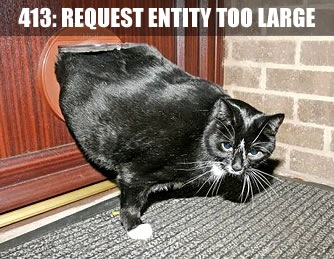Disruption
 Soon – probably in December – in addition to pointing you to interesting tech news articles and bits of geek culture, I will also be returning to writing development articles. And yes, that includes the long-on-hiatus Enumerating Enumerable series of articles cataloguing the methods in Ruby’s Enumerable module.
Soon – probably in December – in addition to pointing you to interesting tech news articles and bits of geek culture, I will also be returning to writing development articles. And yes, that includes the long-on-hiatus Enumerating Enumerable series of articles cataloguing the methods in Ruby’s Enumerable module.
The past couple of months have been disruptive as all Hell, what with:
And now,
- Working like mad to acclimate myself with a new employer — my first Fortune 500 company, and my first with over 200 employees!)
- Readjusting to a new work style: working largely from home, with runs out into “the field” and the Mississauga and downtown Toronto offices
- Re-acclimating myself with Microsoft development tools, which I haven’t used since early 2002
It’s been exciting and fun, but there are only so many hours in the day and so much energy one can muster to do things, which meant that the programming articles, which take a lot of work, testing and verifying, had to fall by the wayside. But they’re coming back soon.
Country First

Me and a Mountie at the Canadian Embassy
in Washington, DC in 2000,
a.k.a. the “experimenting with nutty hair colour” year.
“We hired you first and foremost for Canada,” said my boss, John Oxley, Director – Audience Marketing at Microsoft Canada, “and for Microsoft second.”
That means that while I’ll be writing a lot about Microsoft developer tools and technologies, my primary goal as Microsoft Developer Evangelist is to use my tech evangelism powers to encourage, assist, grow and cast a spotlight on the Canadian software industry. I get it; a healthy Canadian software ecosystem is good for all players, including “The Empire”.
If you’re a software developer in Canada, whether you’re writing enterprise software for a big corporation or a one-person shop operating out of your den, a full-time employee or a student in high school, or a Microsoft tech “true believer” or a hardcore Free Software/Open Source type, you are the person I’m trying to reach.
So if you’re a developer, watch this space – some meaty development articles are coming soon!

 Soon – probably in December – in addition to pointing you to interesting tech news articles and bits of geek culture, I will also be returning to writing development articles. And yes, that includes the long-on-hiatus
Soon – probably in December – in addition to pointing you to interesting tech news articles and bits of geek culture, I will also be returning to writing development articles. And yes, that includes the long-on-hiatus 


